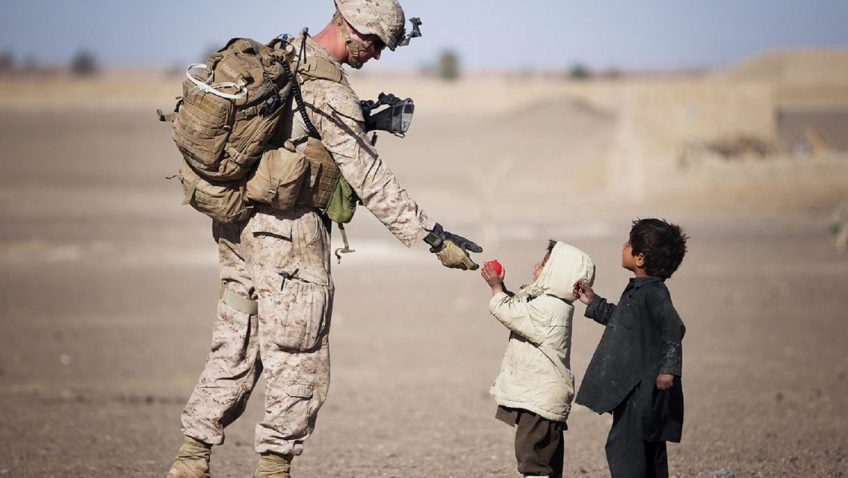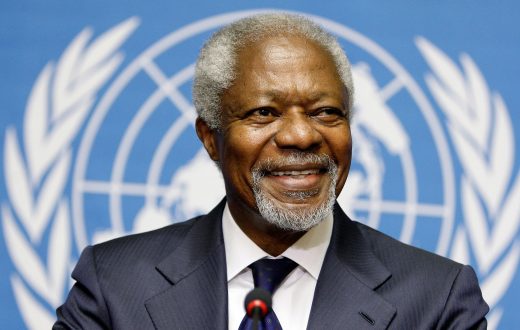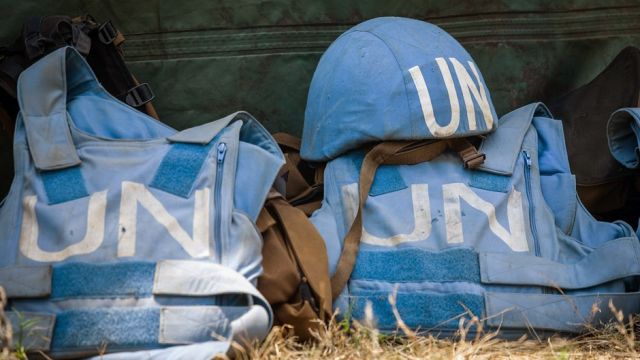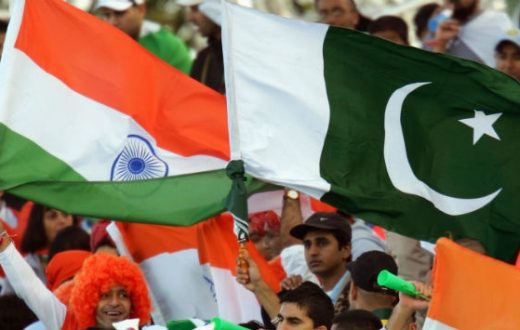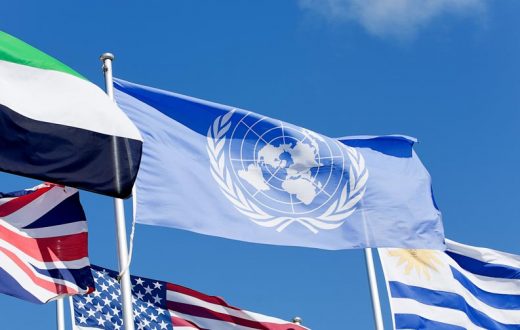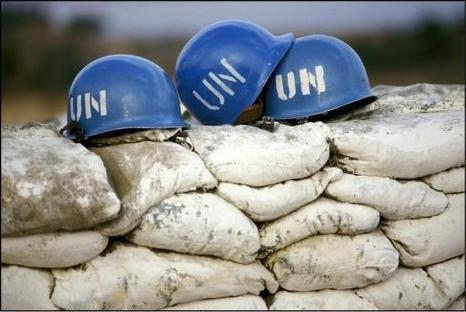Introduction
Alone in the 20th century, 262 million people lost their lives by the hands of their government (Bellamy, 2013, p. 487). Human atrocities such as the genocides in Kosovo, Colombia, or Rwanda shock the world to the core while the international community was incapable of intervening. Questions of intervening into state’s affairs without the consent of the United Nations (UN) and the judgement of: “Has there been enough killing to intervene?” challenged the core principles of sovereignty and non-intervention anchored in the UN Charter (Bellamy, 2013, pp. 490-491). Today, after the international community was incapable of intervening in Syria, the question surfaces again as of do we have a responsibility to protect? This essay argues that we have. However, it highlights that it has been challenging to implement due to the Responsibility to Protect’s (R2P) terminology, political will, the issue of state sovereignty, and the problem of intervention.
Presence of R2P
Even though the R2P has faced challenges since the intervention in Libya of 2011, it has remained one of the most arguable debates of the international community (Evans, 2015, pp. 34-35). “[N]o state is now heard to disagree that every sovereign state has the responsibility […] to protect its own people from…” humanitarian atrocities (Evans, 2015, p. 35). Furthermore, no state seems to disagree on the R2P or tries to challenge its principles (Evans, 2015, p. 35). Moreover, the UN Security Council (UNSC) endorses the principle and its language and has passed countless resolutions regarding the R2P principle; the last resolution being in August 2017 recalling the R2P of the Malian government (Evans, 2015, p. 35); (Anon., 2017). Furthermore, the paralysis of Libya and Syria has shown a new interest and flexibility of the UNSC to find ways to recreate and enact the R2P (Evans, 2015, p. 35). For example, under the name of Responsibility While Protecting (RWP), Brazil proposed that the criteria for using military intervention should be discussed more fully by the UNSC (Evans, 2015, pp. 35-36). Additionally, the country proposed that the review monitoring and review procedures should be enhanced (Evans, 2015, pp. 35-36).
The Responsibility to Protect
In 2001, the Principles of International Commission on Intervention and State Sovereignty (ICISS) included a responsibility to protect populations in the definition of state sovereignty (Thakur & Maley, 2015, p. 1). In 2005, more than 150 Heads of Governments implemented these principles in the United Nations World Summit Outcome Document which stated that “[e]ach Individual State has the responsibility to protect its populations from genocide, war crimes, ethnic cleansing and crimes against humanity” (Evans, 2015, p. 23); (General Assembly, 2005, p. Art. 138). They also agreed upon a responsibility to support states to fulfil their R2P and that the R2P would transmission to the international community if a state fails to perform it – three points known as the “three pillars” of R2P (Zyberi, 2014, p. 57). Given the evidence from above, I argue that we have a responsibility to protect. However, the reason why we struggle to implement it is due to the following challenges.
Terminology
As seen above, the terminology says explicitly that the individual state has the R2P while “[t]he international community should […] encourage and help States to exercise this responsibility [R2P] and support the United Nations in establishing an early warning capability” (General Assembly, 2005, p. Art. 138). This means that individual states shoulder the R2P but not the international community. Also, by using the word should, the Outcome Document and the R2P appear non-compulsory and therefore, fail to obligate the international community to perform their R2P (Oldemeinen, 2012). Accordingly, the document misses to define the international community, and thus, it avoids pinpointing at specific global entities or states in case of incapability of intervening (Pattison, 2010). Indeed, the UN seems to be the most appropriate agent for that (Pattison, 2010). Yet, the UN has failed to intervene twice before the outbreak in Syria (Pattison, 2010). The reason: political will of the Member States (Pattison, 2010).
Political Will
“Political will and military capacity ultimately determine whether, when, where, and why to protect and assist vulnerable populations” (Weiss, 2014, p. 36). Therefore, to apply the R2P “…depends on the existence of political will” (Aaronson, 2014, p. 59). This could be seen in 1994 in Rwanda where 2,500 UN peacekeeping forces were stationed in the country during the occurring genocide (Pattison, 2010). It was clear that the genocide has been transpiring, but the permission to intervene was not granted (Pattison, 2010). The response: “Our conclusion is there is one overriding failure which explains why the UN could not stop or prevent the genocide, and that is a lack of resources and a lack of will – a lack of will to take on the commitment necessary to prevent the genocide” (Winfield, 1999). Also in Srebrenica, which was declared a “safe haven”, the UN remained reluctant to send ground forces and ignored the slaughter of Bosnian Muslims (Pattison, 2010). Conversely, the political will amongst Western Powers was sufficient in the case of Syria, but the UNSC was unable to intervene due to a veto by Russia and China (Glanville, 2014, p. 46). The reason: State sovereignty (King, 2013, p. 1).
State sovereignty and non-intervention
While the R2P attempted to close the gap between sovereignty and human rights, states remain reluctant to intervene because the principles of sovereignty and non-intervention are anchored in the UN Charter (Bellamy, 2013, pp. 486-487). State sovereignty gives states the right to rule their people and territory without any external interferences (Bellamy, 2013, p. 487). Therefore, the notion of “sovereignty as responsibility” and the “responsibility to protect” are seen as radical withdrawals from this traditional Westphalian sovereignty (Glanville, 2010, p. 234). Non-intervention is defined as “…a sovereign state [being] empowered by international law to exercise exclusive and total jurisdiction within its territorial borders, and other states have the corresponding duty not to intervene in its internal affairs” (Evans & Sahnoun, 2002, p. 102). Consequently, the international community, acting through the UN, has been unable to intervene in atrocities such the one in Syria (King, 2013). However, with the question of intervention comes also the question of when a response is justified and how such response should look like?
Intervention
The international community enacts R2P through the three R2P pillars: responsibility to prevent, react, and rebuild (Evans & Sahnoun, 2002, p. 103). The responsibility to prevent uses economic, political, or judicial measures which can be used before a situation escalates to a human atrocity (Evans & Sahnoun, 2002, p. 103). Conversely, the responsibility to rebuild assures that a humanitarian atrocity will not reoccur after the R2P mission has ended (Evans & Sahnoun, 2002, p. 103). The responsibility to react includes measures such as peaceful diplomacy, economic incentives, international criminal persecutions, or sanctions (Evans & Sahnoun, 2002, p. 103). However, if these measures fail, only in exceptional cases, and under the guidelines of the UN Charter, military intervention is allowed. Though, this has been criticised by non-governmental organizations (NGOs) which fear that powerful states will use this right to invade another state out of national self-interest (Oldemeinen, 2012); (van Steenberghe, 2013, p. 37). For example, the by the NATO-led operation in Libya was celebrated as the first successful R2P mission (Kuperman, 2013, p. 113). Yet “…NATO took actions that were unnecessary and inconsistent with protecting civilians but fostered regime change” (Kuperman, 2013, p. 113). Secondly, NGOs criticise that the criteria for restoring to force are too vaguely defined and that there should be concrete guidelines for military intervention (van Steenberghe, 2013, p. 38).
Conclusion
Do we have a responsibility to protect? Seeing the development surrounding the topic of the Responsibility to Protect and the definition anchored in the 2005 Outcome Document then: Yes, we do! Yet, the R2P faces some inherent challenges in its execution. First, the R2P’s terminology is vaguely formulated and rests the R2P on individual Member States of the UN, not the international community. Also, it fails to define what the international community implicates which allows states to elude their R2P. Second, the UN has the means to intervene in human atrocities but fails to do so because of the unwillingness of Member States. Third, Westphalian sovereignty and non-intervention are deeply embedded in the UN Charter, and consequently, states feel wary about interfering in another state’s affairs. Last, states can prevent, react, and rebuild under the R2P and use military actions if necessary. Yet, NGOs criticise that the criteria for military intervention are imprecise and fear that powerful states will use this to their advantage.
Indeed, the R2P still has a long way to go to perfection. However, patience is key. The concept is less than 20 years old and attempts to challenge political theories which are deeply embedded in our political life. One does not simply rewrite those characteristics or pass a policy about them but continue to contest them. This has proven to be successful for changing political history, and it will be no different with the Responsibility to Protect.
References
Aaronson, M., 2014. Syria and the Crisis of Humanitarian Intervention. In: R. W. Murray & A. Mckay, eds. Into the Eleventh Hour: R2P, Syria and Humanitarian Crisis. s.l.:E-International Relations, pp. 56-61.
Annan, K. A., 2000. We the Peoples – The Role of the United Nations in the 21st century, New York: United Nations.
Anon., 2005. The 2005 World Summit. New York: United Nations.
Anon., 2017. UN Security Council Resolutions Referencing R2P. s.l.:Global Centre for the Responsibility to Protect.
Anon., n.d. About R2P. s.l.:Global Centre for the Responsibility to Protect.
Assembly, U. N. G., 2005. Resolution A/RES/60/1. New York, United Nations General Assembly.
Bellamy, A. J., 2013. The Responsibility to Protect. In: P. D. Willliams, ed. Security Studies – An Introduction. 2 ed. Oxon: Routledge, pp. 486-502.
Evans, G., 2015. The evolution of the Responsibility to Protect: from concept and principle to actionable form. In: R. Thakur & W. Maley, eds. Theorising the Responsibility to Protect. Cambridge: Cambridge University Press, pp. 16-37.
Evans, G. & Sahnoun, M., 2002. The Responsibility to Protect. Foreign Affairs, November-December, 81(6), pp. 99-110.
General Assembly, 2005. General Assembly Resolution A/RES/60/1. New York: United Nations.
Glanville, L., 2010. The antecedents of ‘sovereignty as responsibility’. European Journal of International Relations, 19 May , 17(2), pp. 233-255.
Glanville, L., 2014. Syria Teaches Us Little about Questions of Military Intervention. In: R. W. Murray & A. Mckay, eds. Into the Eleventh Hour: R2P, Syria and Humanitarianism in Crisis. s.l.:E-International Relations, pp. 44-49.
King, J., 2013. Intervention in Syria is a necessary assault on state sovereignty. s.l.:Ford Institute for Human Security.
Kuperman, A. J., 2013. A Model Humanitarian Intervention?: Reassessing NATO’s Libya Campaign. International Security, 38(1), pp. 105-136.
Murray, R. W. & Mckay, A., 2014. Introduction. In: Into the Eleventh Hour: R2P, Syria and Humanitarianism in Crisis. Bristol: E-International Relations, pp. 11-17.
Oldemeinen, M., 2012. Non-Intervention, or Responsibility to Protect?. s.l.:E-International Relations.
Pattison, J., 2010. The Problem of Who Should Intervene. In: Humanitarian Intervention and the Responsibility To Protect: Who Should Intervene?. s.l.:Oxford Scholarship Online, pp. 1-36.
Sampford, C. & Thakur, R., 2015. From the right to persecute to the Responsibility to Protect: Feuerbachian inversions of rights and responsibilites in state-citizen relations. In: R. Thakur & W. Maley, eds. Theorising the Responsibility to Protect. 1 ed. Cambridge: Cambridge University Press, pp. 38-58.
Sharma, S. K. & Welsh, J. M., 2015. Introduction. In: S. K. Sharma & J. M. Welsh, eds. The Responsibility to Prevent: Overcoming the Challenges of Atrocity Prevention. s.l.:Oxford Scholarship Online, pp. 1-23.
Thakur, R. & Maley, W., 2015. Introduction: theorising global responsibilities. In: R. Thakur & W. Maley, eds. Theorising the Responsibility to Protect. Paperback ed. Cambridge: Cambridge University Press, pp. 3-15.
van Steenberghe, R., 2013. Non-State actors. In: G. Zyberi, ed. An Institutional Approach to the Responsibility to Protect. s.l.:Cambridge University Press, pp. 33-57.
Weiss, T. G., 2014. After Syria, Whither R2P?. In: R. W. Murray & A. Mckay, eds. Into the Eleventh Hour: R2P, Syria and Humanitarianism. s.l.:E-International Relations, pp. 34-37.
Winfield, N., 1999. UN Failed Rwanda. s.l.:Global Policy Forum.
Zyberi, G., 2014. The Role of Non-State Actors in Implementing the Responsibility to Protect. In: Human Security and International Law: The Challenge of Non-State Actors. s.l.:s.n., pp. 53-75.

